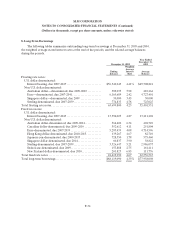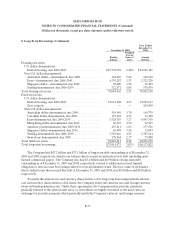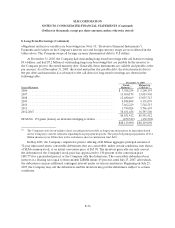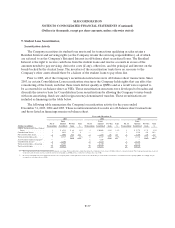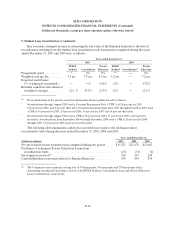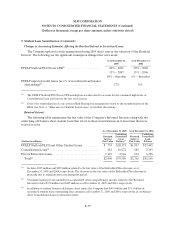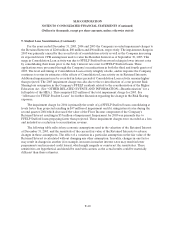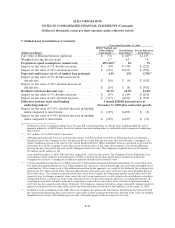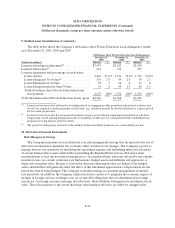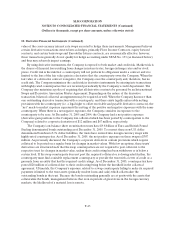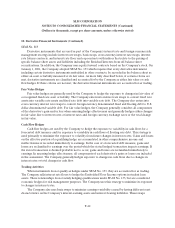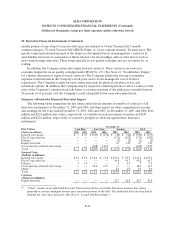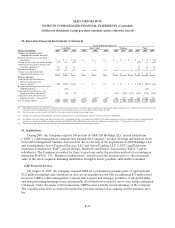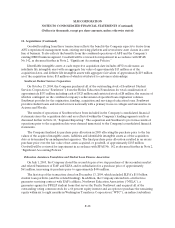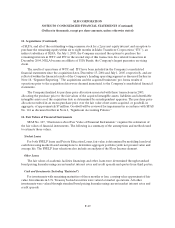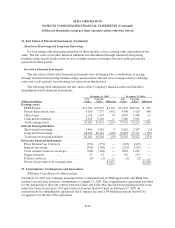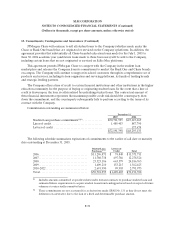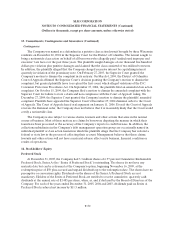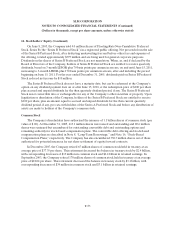Sallie Mae 2005 Annual Report Download - page 166
Download and view the complete annual report
Please find page 166 of the 2005 Sallie Mae annual report below. You can navigate through the pages in the report by either clicking on the pages listed below, or by using the keyword search tool below to find specific information within the annual report.SLM CORPORATION
NOTES TO CONSOLIDATED FINANCIAL STATEMENTS (Continued)
(Dollars in thousands, except per share amounts, unless otherwise stated)
F-44
10. Derivative Financial Instruments (Continued)
SFAS No. 133
Derivative instruments that are used as part of the Company’s interest rate and foreign currency risk
management strategy include interest rate swaps, basis swaps, cross-currency interest rate swaps, interest
rate futures contracts, and interest rate floor and cap contracts with indices that relate to the pricing of
specific balance sheet assets and liabilities including the Residual Interests from off-balance sheet
securitizations. In addition, the Company uses equity forward contracts based on the Company’s stock. On
January 1, 2001, the Company adopted SFAS No. 133 which requires that every derivative instrument,
including certain derivative instruments embedded in other contracts, be recorded in the balance sheet as
either an asset or liability measured at its fair value. As more fully described below, if certain criteria are
met, derivative instruments are classified and accounted for by the Company as either fair value or cash
flow hedges. If these criteria are not met, the derivative financial instruments are accounted for as trading.
Fair Value Hedges
Fair value hedges are generally used by the Company to hedge the exposure to changes in fair value of
a recognized fixed rate asset or liability. The Company enters into interest rate swaps to convert fixed rate
assets into variable rate assets and fixed rate debt into variable rate debt. The Company also enters into
cross-currency interest rate swaps to convert foreign currency denominated fixed and floating debt to U.S.
dollar denominated variable debt. For fair value hedges, the Company generally considers all components
of the derivative’s gain and/or loss when assessing hedge effectiveness and generally hedges either changes
in fair value due to interest rates or interest rates and foreign currency exchange rates or the total change
in fair value.
Cash Flow Hedges
Cash flow hedges are used by the Company to hedge the exposure to variability in cash flows for a
forecasted debt issuance and for exposure to variability in cash flows of floating rate debt. This strategy is
used primarily to minimize the exposure to volatility from future changes in interest rates. Gains and losses
on the effective portion of a qualifying hedge are accumulated in other comprehensive income and
ineffectiveness is recorded immediately to earnings. In the case of a forecasted debt issuance, gains and
losses are reclassified to earnings over the period which the stated hedged transaction impacts earnings. If
the stated transaction is deemed probable not to occur, gains and losses are reclassified immediately to
earnings. In assessing hedge effectiveness, all components of each derivative’s gains or losses are included
in the assessment. The Company generally hedges exposure to changes in cash flows due to changes in
interest rates or total changes in cash flow.
Trading Activities
When instruments do not qualify as hedges under SFAS No. 133, they are accounted for as trading.
The Company sells interest rate floors to hedge the Embedded Floor Income options in student loan
assets. These relationships do not satisfy hedging qualifications under SFAS No. 133, but are considered
economic hedges for risk management purposes. The Company uses this strategy to minimize its exposure
to changes in interest rates.
The Company also uses basis swaps to minimize earnings variability caused by having different reset
characteristics on the Company’s interest-earning assets and interest-bearing liabilities. These swaps


